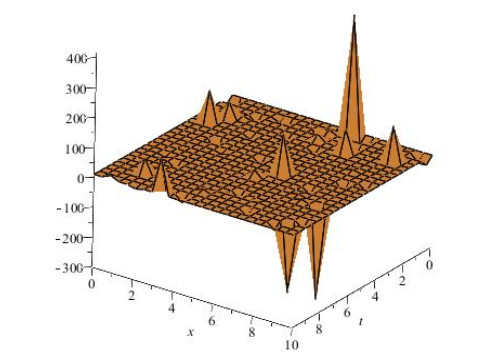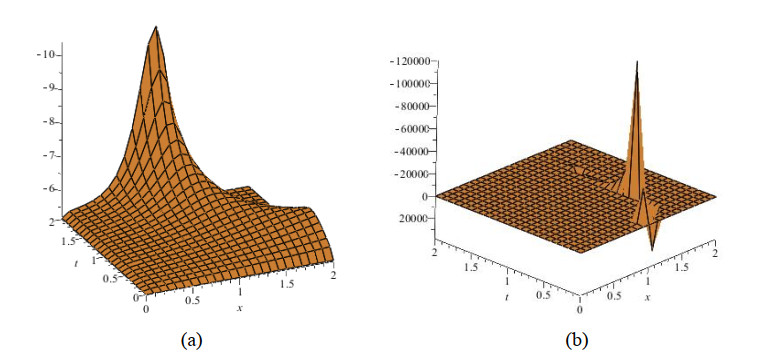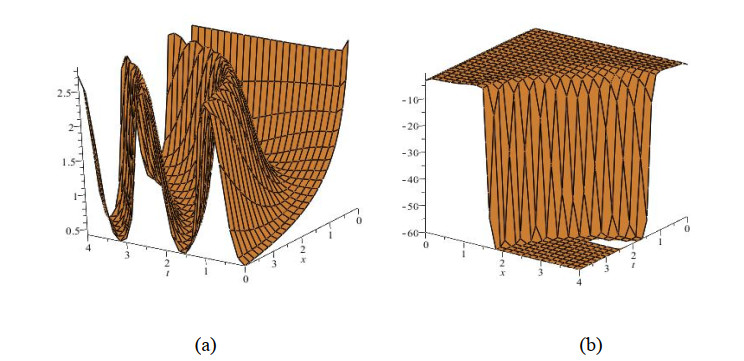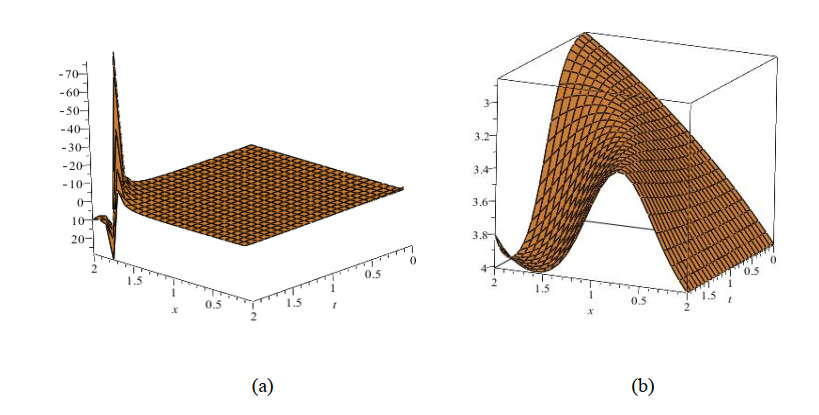|
[1]
|
A. Bekir, Ö. Güner, The G' G-expansion method using modified Riemann-Liouville derivative for some space-time fractional differential equations, Ain Shams Eng. J., 5 (2014), 959-965.
|
|
[2]
|
Z. Bin, (G'/G)-expansion method for solving fractional partial differential equations in the theory of mathematical physics, Commun. Theor. Phys., 58 (2012), 623. doi: 10.1088/0253-6102/58/5/02

|
|
[3]
|
U. Ali, M. Sohail, M. Usman, F. A. Abdullah, I. Khan, K. S. Nisar, Fourth-order difference approximation for time-fractional modified sub-diffusion equation, Symmetry, 12 (2020), 691. doi: 10.3390/sym12050691

|
|
[4]
|
U. Ali, F. A. Abdullah, A. I. Ismail, Crank-Nicolson finite difference method for two-dimensional fractional sub-diffusion equation, J. Interpolation Approximation Sci. Comput., (2017), 18-29.
|
|
[5]
|
Y. Jiang, J. Ma, High-order finite element methods for time-fractional partial differential equations, J. Comput. Appl. Math., 235 (2011), 3285-3290. doi: 10.1016/j.cam.2011.01.011

|
|
[6]
|
M. H. Srivastava, H. Ahmad, I. Ahmad, P. Thounthong, N. M. Khan, Numerical simulation of three-dimensional fractional-order convection-diffusion PDEs by a local meshless method, Therm. Sci., 25 (2021), 347-358. doi: 10.2298/TSCI200225210S

|
|
[7]
|
P. Zhuang, F. Liu, Finite difference approximation for two-dimensional time fractional diffusion equation, J. Algorithms Comput. Technol., 1 (2007), 1-16. doi: 10.1260/174830107780122667

|
|
[8]
|
H. Ahmad, T. A. Khan, S. W. Yao, An efficient approach for the numerical solution of fifth order KdV equations, Open Math., 18 (2020), 738-748. doi: 10.1515/math-2020-0036

|
|
[9]
|
M. Cui, Compact alternating direction implicit method for two-dimensional time fractional diffusion equation, J. Comput. Phys., 231 (2012), 2621-2633. doi: 10.1016/j.jcp.2011.12.010

|
|
[10]
|
Y. Jiang, J. Ma, High-order finite element methods for time-fractional partial differential equations, J. Comput. Appl. Math., 235 (2011), 3285-3290. doi: 10.1016/j.cam.2011.01.011

|
|
[11]
|
U. Ali, F. A. Abdullah, Explicit Saul'yev finite difference approximation for two-dimensional fractional sub-diffusion equation, AIP Conference Proceedings, 1974 (2018), 020111. doi: 10.1063/1.5041642

|
|
[12]
|
I. Ahmad, A. Abouelregal, H. Ahmad, P. Thounthong, M. Abdel-Aty, A new analyzing method for hyperbolic telegraph equation, Authorea, 2020.
|
|
[13]
|
A. T. Balasim, N. H. M. Ali, A comparative study of the point implicit schemes on solving the 2D time fractional cable equation, AIP Conference Proceedings, 1870 (2017), 040050. doi: 10.1063/1.4995882

|
|
[14]
|
A. Akgül, A novel method for a fractional derivative with non-local and non-singular kernel, Chaos, Solitons Fractals, 114 (2018), 478-482. doi: 10.1016/j.chaos.2018.07.032

|
|
[15]
|
A. Akgül, S. Ahmad, A. Ullah, D. Baleanu, E. K. Akgül, A novel method for analysing the fractal fractional integrator circuit, Alexandria Eng. J., 60 (2021), 3721-3729. doi: 10.1016/j.aej.2021.01.061

|
|
[16]
|
A. Akgül, D. Baleanu, Analysis and applications of the proportional Caputo derivative, Adv. Differ. Equations, 2021 (2021), 1-12. doi: 10.1186/s13662-020-03162-2

|
|
[17]
|
A. Akgül, Analysis and new applications of fractal fractional differential equations with power law kernel, Discrete Contin. Dyn. Syst.-S, 2020.
|
|
[18]
|
N. Shang, B. Zheng, Exact solutions for three fractional partial differential equations by the (G'/G) method, Int. J. Appl. Math., 43 (2013), 114-119.
|
|
[19]
|
A. Yokus, H. Durur, H. Ahmad, P. Thounthong, Y. F. Zhang, Construction of exact traveling wave solutions of the Bogoyavlenskii equation by (G'/G, 1/G)-expansion and (1/G')-expansion techniques, Results Phys., (2020), 103409.
|
|
[20]
|
H. K. Barman, A. R. Seadawy, M. A. Akbar, D. Baleanu, Competent closed form soliton solutions to the Riemann wave equation and the Novikov-Veselov equation, Results Phys., (2020), 103-131.
|
|
[21]
|
A. J. A. M. Jawad, M. D. Petković, A. Biswas, Modified simple equation method for nonlinear evolution equations, Appl. Math. Comput., 217 (2010), 869-877.
|
|
[22]
|
Y. Zhang, Solving STO and KD equations with modified Riemann-Liouville derivative using improved (G'/G)-expansion function method, IAENG Int. J. Appl. Math., 45 (2015), 16-22.
|
|
[23]
|
T. Islam, M. A. Akbar, A. K. Azad, Traveling wave solutions to some nonlinear fractional partial differential equations through the rational (G'/G)-expansion method, J. Ocean Eng. Sci., 3 (2018), 76-81. doi: 10.1016/j.joes.2017.12.003

|
|
[24]
|
A. R. Seadawy, D. Yaro, D. Lu, Propagation of nonlinear waves with a weak dispersion via coupled (2+1)-dimensional Konopelchenko-Dubrovsky dynamical equation, Pramana, 94 (2020), 17. doi: 10.1007/s12043-019-1879-z

|
|
[25]
|
A. Başhan, N. M. Yağmurlu, Y. Uçar, A. Esen, Finite difference method combined with differential quadrature method for numerical computation of the modified equal width wave equation, Numer. Methods Partial Differ. Equations, 37 (2021), 690-706. doi: 10.1002/num.22547

|
|
[26]
|
A. Başhan, N. M. Yağmurlu, Y. Uçar, A. Esen, An effective approach to numerical soliton solutions for the Schrödinger equation via modified cubic B-spline differential quadrature method, Chaos, Solitons Fractals, 100 (2017), 45-56. doi: 10.1016/j.chaos.2017.04.038

|
|
[27]
|
A. Başhan, N. M. Yağmurlu, Y. Uçar, A. Esen, A new perspective for the numerical solution of the modified equal width wave equation, Math. Methods Appl. Sci., 2021.
|
|
[28]
|
A. Başhan, A. Esen, Single soliton and double soliton solutions of the quadratic‐nonlinear Korteweg‐de Vries equation for small and long‐times, Numer. Methods Partial Differ. Equations, 37 (2021), 1561-1582. doi: 10.1002/num.22597

|
|
[29]
|
A. Başhan, Y. Uçar, N. M. Yağmurlu, A. Esen, A new perspective for quintic B-spline based Crank-Nicolson-differential quadrature method algorithm for numerical solutions of the nonlinear Schrödinger equation, Eur. Phys. J. Plus, 133 (2018), 1-15. doi: 10.1140/epjp/i2018-11804-8

|
|
[30]
|
A. Başhan, A mixed methods approach to Schrödinger equation: Finite difference method and quartic B-spline based differential quadrature method, Int. J. Optim. Control: Theor. Appl. (IJOCTA), 9 (2019), 223-235. doi: 10.11121/ijocta.01.2019.00709

|
|
[31]
|
A. M. Wazwaz, The Hirota's direct method for multiple-soliton solutions for three model equations of shallow water waves, Appl. Math. Comput., 201 (2008), 489-503.
|
|
[32]
|
K. Hosseini, A. R. Seadawy, M. Mirzazadeh, M. Eslami, S. Radmehr, D. Baleanu, Multiwave, multicomplexiton, and positive multicomplexiton solutions to a (3+1)-dimensional generalized breaking soliton equation, Alexandria Eng. J., 59 (2020), 3473-3479.
|
|
[33]
|
U. Ali, M. Sohail, F. A. Abdullah, An efficient numerical scheme for variable-order fractional sub-diffusion equation, Symmetry, 12 (2020), 1437. doi: 10.3390/sym12091437

|
|
[34]
|
W. G. Glöckle, T. F. Nonnenmacher, A fractional calculus approach to self-similar protein dynamics, Biophys. J., 68 (1995), 46-53. doi: 10.1016/S0006-3495(95)80157-8

|
|
[35]
|
H. Sun, A. Chang, Y. Zhang, W. Chen, A review on variable-order fractional differential equations: Mathematical foundations, physical models, numerical methods, and applications, Fractional Calculus Appl. Anal., 22 (2019), 27-59.
|
|
[36]
|
Y. Shekari, A. Tayebi, M. H. Heydari, A meshfree approach for solving 2D variable-order fractional nonlinear diffusion-wave equation, Comput. Methods Appl. Mech. Eng., 350 (2019), 154-168. doi: 10.1016/j.cma.2019.02.035

|
|
[37]
|
C. M. Chen, F. Liu, I. Turner, V. Anh, Numerical methods with fourth-order spatial accuracy for variable-order nonlinear Stokes' first problem for a heated generalized second grade fluid, Comput. Math. Appl., 62 (2011), 971-986. doi: 10.1016/j.camwa.2011.03.065

|
|
[38]
|
P. Zhuang, F. Liu, V. Anh, I. Turner, Numerical methods for the variable-order fractional advection-diffusion equation with a nonlinear source term, SIAM J. Numer. Anal., 47 (2009), 1760-1781. doi: 10.1137/080730597

|
|
[39]
|
C. M. Chen, F. Liu, V. Anh, I. Turner, Numerical schemes with high spatial accuracy for a variable-order anomalous subdiffusion equation, SIAM J. Scientific Comput., 32 (2010), 1740-1760. doi: 10.1137/090771715

|
|
[40]
|
J. T. Katsikadelis, Numerical solution of variable order fractional differential equations, 2018. Available from: https: //arXiv.org/abs/1802.00519.
|
|
[41]
|
H. Sun, A. Chang, Y. Zhang, W. Chen, A review on variable-order fractional differential equations: Mathematical foundations, physical models, numerical methods and applications, Fractional Calculus Appl. Anal., 22 (2019), 27-59.
|
|
[42]
|
U. Ali, Numerical solutions for two-dimensional time-fractional differential sub-diffusion equation, Ph.D. Thesis, University Sains Malaysia, Penang, Malaysia, 2019.
|
|
[43]
|
S. G. Samko, B. Ross, Integration and differentiation to a variable fractional order, Integr. Transforms Spec. Funct., 1 (1993), 277-300. doi: 10.1080/10652469308819027

|
|
[44]
|
U. Ali, F. A. Abdullah, S. T. Mohyud-Din, Modified implicit fractional difference scheme for 2D modified anomalous fractional sub-diffusion equation, Adv. Differ. Equations, 2017 (2017), 1-14.
|
|
[45]
|
S. Bibi, S. T. Mohyud-Din, U. Khan, N. Ahmed, Khater method for nonlinear Sharma Tasso-Olever (STO) equation of fractional order, Results Phys., 7 (2017), 4440-4450. doi: 10.1016/j.rinp.2017.11.008

|
|
[46]
|
A. Coronel-Escamilla, J. F. Gómez-Aguilar, L. Torres, R. F. Escobar-Jiménez, M. Valtierra-Rodríguez, Synchronization of chaotic systems involving fractional operators of Liouville-Caputo type with variable-order, Phys. A: Stat. Mech. Appl., 487 (2017), 1-21.
|
|
[47]
|
J. F. Gómez-Aguilar, Chaos in a nonlinear Bloch system with Atangana-Baleanu fractional derivatives, Numer. Methods Partial Differ. Equations, 34 (2018), 1716-1738.
|
|
[48]
|
C. J. Zúñiga-Aguilar, H. M. Romero-Ugalde, J. F. Gómez-Aguilar, R. F. Escobar-Jiménez, M. Valtierra-Rodríguez, Solving fractional differential equations of variable-order involving operators with Mittag-Leffler kernel using artificial neural networks, Chaos, Solitons Fractals, 103 (2017), 382-403.
|
|
[49]
|
A. Coronel-Escamilla, J. F. Gómez-Aguilar, L. Torres, M. Valtierra-Rodriguez, R. F. Escobar-Jiménez, Design of a state observer to approximate signals by using the concept of fractional variable-order derivative, Digital Signal Process., 69 (2017), 127-139.
|
|
[50]
|
K. D. Dwivedi, S. Das, J. F. Gomez-Aguilar, Finite difference/collocation method to solve multi term variable‐order fractional reaction-advection-diffusion equation in heterogeneous medium, Numer. Methods Partial Differ. Equations, 37 (2021), 2031-2045.
|
|
[51]
|
C. J. Zúñiga-Aguilar, J. F. Gómez-Aguilar, H. M. Romero-Ugalde, R. F. Escobar-Jiménez, G. Fernández-Anaya, F. E. Alsaadi, Numerical solution of fractal-fractional Mittag-Leffler differential equations with variable-order using artificial neural networks, Eng. Comput., (2021), 1-14.
|
|
[52]
|
J. F. Li, H. Jahanshahi, S. Kacar, Y. M. Chu, J. F. Gómez-Aguilar, N. D. Alotaibi, et al, On the variable-order fractional memristor oscillator: Data security applications and synchronization using a type-2 fuzzy disturbance observer-based robust control, Chaos, Solitons Fractals, 145 (2021), 110681.
|
|
[53]
|
A. H. Khater, D. K. Callebaut, W. Malfliet, A. R. Seadawy, Nonlinear dispersive Rayleigh-Taylor instabilities in magnetohydrodynamic flows, Phys. Scripta, 64 (2001), 533. doi: 10.1238/Physica.Regular.064a00533

|
|
[54]
|
A. H. Khater, D. K. Callebaut, A. R. Seadawy, Nonlinear dispersive instabilities in Kelvin-Helmholtz magnetohydrodynamic flows, Phys. Scr., 67 (2003), 340. doi: 10.1238/Physica.Regular.067a00340

|
|
[55]
|
M. A. Helal, A. R. Seadawy, Variational method for the derivative nonlinear Schrödinger equation with computational applications, Phys. Scr., 80 (2009), 035004. doi: 10.1088/0031-8949/80/03/035004

|
|
[56]
|
M. A. Helal, A. R. Seadawy, Exact soliton solutions of a D-dimensional nonlinear Schrödinger equation with damping and diffusive terms, Z. Angew. Math. Phys., 62 (2011), 839. doi: 10.1007/s00033-011-0117-4

|
|
[57]
|
R. Aly, Exact solutions of a two-dimensional nonlinear Schrödinger equation, Appl. Math. Lett., 25 (2012), 687-691. doi: 10.1016/j.aml.2011.09.030

|
|
[58]
|
A. R. Seadawy, Fractional solitary wave solutions of the nonlinear higher-order extended KdV equation in a stratified shear flow: Part I, Comput. Math. Appl., 70 (2015), 345-352. doi: 10.1016/j.camwa.2015.04.015

|
|
[59]
|
A. R. Seadawy, Approximation solutions of derivative nonlinear Schrödinger equation with computational applications by variational method, Eur. Phys. J. Plus, 130 (2015), 1-10. doi: 10.1140/epjp/i2015-15001-1

|
|
[60]
|
A. R. Seadawy, Three-dimensional nonlinear modified Zakharov-Kuznetsov equation of ion-acoustic waves in a magnetized plasma, Comput. Math. Appl., 71 (2016), 201-212. doi: 10.1016/j.camwa.2015.11.006

|
|
[61]
|
M. Bilal, A. R. Seadawy, M. Younis, S. T. R. Rizvi, K. El-Rashidy, S. F. Mahmoud, Analytical wave structures in plasma physics modelled by Gilson-Pickering equation by two integration norms, Results Phys., 23 (2021), 103959. doi: 10.1016/j.rinp.2021.103959

|
|
[62]
|
A. R. Seadawy, M. Bilal, M. Younis, S. T. R. Rizvi, S. Althobaiti, M. M. Makhlouf, Analytical mathematical approaches for the double-chain model of DNA by a novel computational technique, Chaos, Solitons Fractals, 144 (2021), 110669. doi: 10.1016/j.chaos.2021.110669

|
|
[63]
|
A. Ali, A. R. Seadawy, D. Lu, Dispersive analytical soliton solutions of some nonlinear waves dynamical models via modified mathematical methods, Adv. Differ. Equations, 2018 (2018), 1-20. doi: 10.1186/s13662-017-1452-3

|
|
[64]
|
M. Arshad, A. R. Seadawy, D. Lu, Bright-dark solitary wave solutions of generalized higher-order nonlinear Schrödinger equation and its applications in optics, J. Electromagn. Waves Appl., 31 (2017), 1711-1721. doi: 10.1080/09205071.2017.1362361

|
|
[65]
|
S. T. R. Rizvi, A. R. Seadawy, F. Ashraf, M. Younis, H. Iqbal, D. Baleanu, Lump and interaction solutions of a geophysical Korteweg-de Vries equation, Results Phys., 19 (2020), 103661. doi: 10.1016/j.rinp.2020.103661

|
|
[66]
|
A. R. Seadawy, D. Kumar, K. Hosseini, F. Samadani, The system of equations for the ion sound and Langmuir waves and its new exact solutions, Results Phys., 9 (2018), 1631-1634. doi: 10.1016/j.rinp.2018.04.064

|
|
[67]
|
N. Cheemaa, A. R. Seadawy, S. Chen, More general families of exact solitary wave solutions of the nonlinear Schrödinger equation with their applications in nonlinear optics, Eur. Phys. J. Plus, 133 (2018), 1-9. doi: 10.1140/epjp/i2018-11804-8

|
|
[68]
|
N. Cheemaa, A. R. Seadawy, S. Chen, Some new families of solitary wave solutions of the generalized Schamel equation and their applications in plasma physics, Eur. Phys. J. Plus, 134 (2019), 117. doi: 10.1140/epjp/i2019-12467-7

|
|
[69]
|
Y. S. Özkan, E. Yaşar, A. R. Seadawy, On the multi-waves, interaction and Peregrine-like rational solutions of perturbed Radhakrishnan-Kundu-Lakshmanan equation, Phys. Scr., 95 (2020), 085205.
|
|
[70]
|
A. R. Seadawy, N. Cheemaa, Some new families of spiky solitary waves of one-dimensional higher-order K-dV equation with power law nonlinearity in plasma physics, Indian J. Phys., 94 (2020), 117-126. doi: 10.1007/s12648-019-01442-6

|
|
[71]
|
D. Lu, A. R. Seadawy, A. Ali, Dispersive traveling wave solutions of the equal-width and modified equal-width equations via mathematical methods and its applications, Results Phys., 9 (2018), 313-320. doi: 10.1016/j.rinp.2018.02.036

|
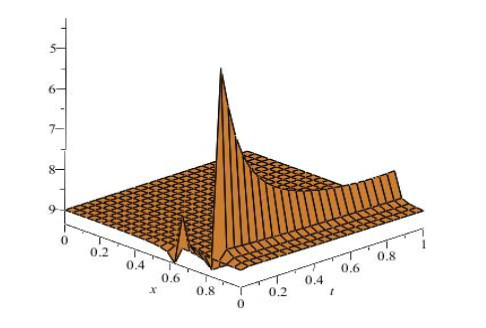















 DownLoad:
DownLoad:
